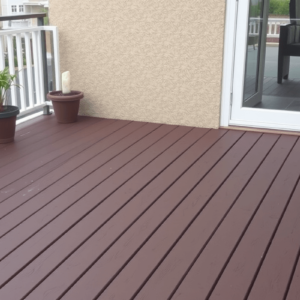Wood vs Vinyl vs Composite Fencing: A Detailed Comparative Analysis
Introduction
When it comes to selecting a fence for your property, there are several options available in the market, including wood, vinyl, and composite materials. Each of these materials has its unique set of advantages and disadvantages in terms of durability, maintenance, cost, appearance, and environmental impact. This article aims to provide a comprehensive comparison of wood, vinyl, and composite fencing, helping you make an informed decision based on your specific needs and preferences.
Durability
One of the primary considerations when choosing a fencing material is its durability. Wood fences are known for their natural beauty but are susceptible to wear and tear over time due to weather exposure. Vinyl fences, on the other hand, are highly durable and can last up to 50 years with minimal maintenance. Composite fences are also durable, made from a mix of recycled wood fibers and plastic, providing resistance against rot and insects. However, they may not be as robust as vinyl under extreme weather conditions.
Maintenance Requirements
Maintenance is another crucial factor to consider. Wooden fences require regular painting or staining to protect them from moisture and UV damage, which can be labor-intensive and costly. Vinyl fences are virtually maintenance-free, requiring only occasional cleaning with soap and water. Composite fences also require less maintenance than wood but more than vinyl, needing periodic cleaning and occasional replacement of damaged sections.
Initial and Long-Term Costs
In terms of initial costs, wood fences are typically the most affordable option. However, the long-term cost of wood fences can be higher due to the need for frequent repairs and replacements. Vinyl fences have a higher upfront cost but offer significant savings over time due to their durability and low maintenance requirements. Composite fences fall somewhere in between, offering a balance between initial cost and long-term savings.
Appearance
Appearance plays a vital role in the choice of fencing material. Wood fences offer a classic and customizable look that can enhance the aesthetic appeal of any property. Vinyl fences come in various styles and colors, allowing homeowners to choose a design that complements their home’s exterior. Composite fences mimic the look of wood while offering greater durability and resistance to weather elements.
Environmental Impact
The environmental impact of fencing materials is an increasingly important consideration. Wood fences are generally considered eco-friendly, especially if sourced from sustainably managed forests. Vinyl fences have a lower environmental impact during manufacturing but can be challenging to recycle at the end of their life cycle. Composite fences are made from recycled materials, reducing waste, but their production process can be energy-intensive.
Real-Life Examples and Case Studies
For instance, a study conducted by the University of California, Davis, found that composite fences outlasted wood fences by several years, despite similar initial costs. Another example is the case of a suburban homeowner who chose vinyl fencing for its durability and low maintenance, resulting in significant cost savings over a decade compared to wooden alternatives.
Conclusion
Choosing the right fencing material depends on your priorities regarding durability, maintenance, cost, appearance, and environmental impact. While wood offers a traditional look and is cost-effective initially, vinyl provides unmatched durability and minimal maintenance, making it a popular choice for many homeowners. Composite fences strike a balance between these two extremes, offering both aesthetics and durability. By considering these factors, you can select the fencing material that best suits your needs and enhances your property’s value.
Reference
Sustainable Urban Forests: A Guide for Planners and Managers, University of California, Davis.





Reviews
There are no reviews yet.